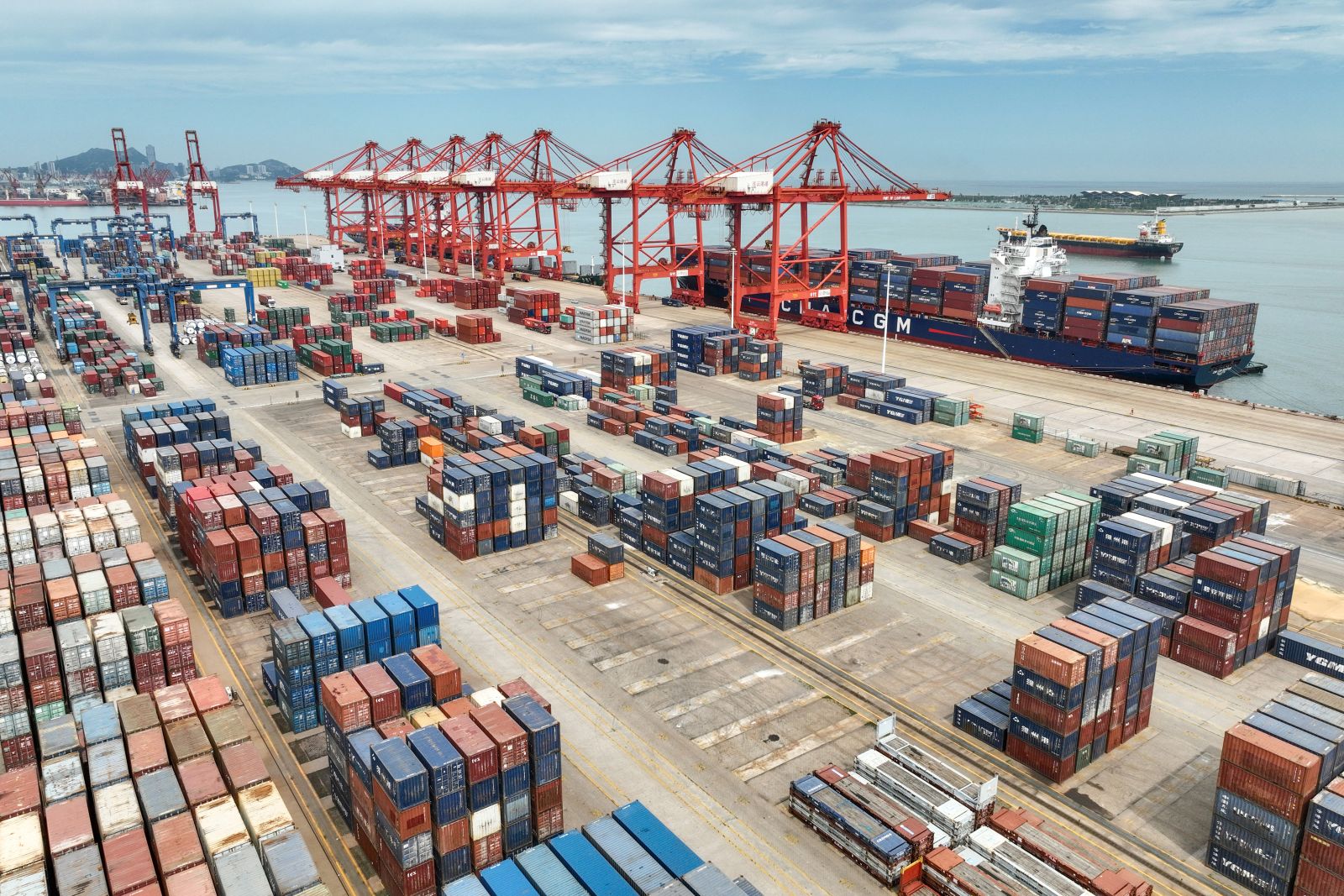China exports up, imports down points to uneven economic recovery
ALBAWABA – China exports picked up for the first time in six months in November, which suggests that the manufacturing sector in the world’s second-largest economy may be recovering, though slowly.
However, mixed manufacturing data for November has kept calls for further policy support alive to shore up growth.
It also raised questions about whether predominantly negative sentiment-based surveys have masked improvements in conditions.
Exports grew 0.5 percent from a year earlier in November, customs data showed on Thursday, compared with a 6.4 percent fall in October and beating the 1.1 percent drop expected in a Reuters poll.
Imports, however, fell 0.6 percent, dashing forecasts for a 3.3 percent increase and swinging from a 3.0 percent jump last month, Reuters reported.
According to Agence France-Presse (AFP), imports slid to $224 billion in November.

China exports up for the first time in 6 months (AFP)
As for exports, AFP reported the reading compares from last year, when authorities were still wedded to a zero-Covid policy that hammered output and business activity.
Globally, the Baltic Dry Index, a bellwether gauge of global trade, climbed to a three-year high in November, supported by improved demand for industrial commodities, particularly from China.
South Korean exports, another gauge of the health of global trade, rose for a second month in November, buoyed by chip exports, which snapped 15 months of declines, Reuters reported.
Overseas China exports rose to $291 billion, according to the General Administration of Customs (GAC) said, as reported by AFP.
Meanwhile, shipments to the United States and European Union plummeted nearly 14 percent and 11 percent last month, respectively, according to AFP. But exports to Russia jumped more than 50 percent, underscoring Beijing's economic rapprochement with its staunch ally despite its invasion of Ukraine.
November indicators show rise in China imports may be an anamoly
On the other hand, the International Monetary Fund in November upgraded its China growth forecasts for 2023 and 2024 by 0.4 percent each, but that came from a lower base. Whereas Moody's on Tuesday issed a downgrade warning on China's A1 credit rating.
Chinese markets seemed to reflect that cautiousness, with the yuan easing against the dollar after the data. China’s blue chip CSI300 stock index fell 0.44 percent and Hong Kong's Hang's Hang Seng lost 1.46 percent, as reported by Reuters.
Likewise, China's crude oil imports in November fell 9.2 percent year-on-year, marking the first annual decline since April.

China exports up for the first time in 6 months - Shutterstock
High inventory levels and poor manufacturing activity took their toll on demand for products such as diesel. But iron ore imports climbed slightly last month.
Factory gate prices in the official PMI contracted for a second month in November, while input costs expanded for a fifth straight month, Reuters reported.
AFP’s analysts say it is too early to tell whether the recent policy support will be enough to shore up domestic demand and how sustainable any uptick in overseas demand is. Especially with property, unemployment and weak household and business confidence threatening a sustainable rebound at home.









